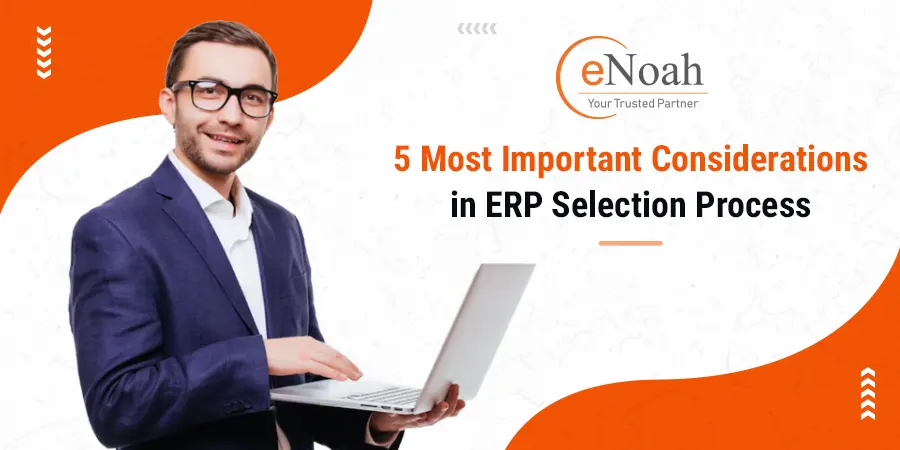
In the realm of modern business operations, the selection of an Enterprise Resource Planning (ERP) system stands as a pivotal decision. An ERP system acts as the central nervous system, synchronizing and streamlining diverse business processes into a cohesive unit. However, with a plethora of options available in the market, choosing the right ERP demands careful evaluation and consideration of several crucial factors. In this comprehensive guide, we’ll delve into the five most important considerations during the ERP selection process, exploring their significance and impact on organizational success.
Scalability forms the cornerstone of an ERP system’s longevity. Businesses evolve, expand, and encounter fluctuations in demand over time. Hence, the chosen ERP must possess the capability to grow in tandem with the organization. Whether it’s accommodating increased data volumes, expanding user bases, or incorporating additional functionalities, a scalable ERP ensures future readiness.
Moreover, flexibility is equally paramount. The ability to customize and tailor the ERP system to suit specific business needs enhances its adaptability. Look for solutions that offer modular architecture, allowing businesses to add or modify functionalities without disrupting the entire system. A flexible ERP minimizes the need for frequent overhauls or replacements, providing a sustainable solution that evolves with the organization’s requirements.
The core functionalities offered by an ERP system should align seamlessly with the operational needs of the organization. Evaluating modules such as finance, human resources, supply chain management, inventory, customer relationship management (CRM), and more is imperative. Each module should not only meet current requirements but also have the potential to cater to future needs as the business expands.
Equally crucial is the integration capability of the ERP. Businesses operate with multiple systems and applications. The selected ERP should integrate effortlessly with existing software, databases, and third-party applications. Smooth data flow across departments eliminates silos, fostering a holistic view of operations and enhancing overall efficiency.
The success of an ERP implementation heavily relies on user adoption. A user-friendly interface is indispensable to ensure seamless adoption by employees across various departments. An intuitive and easily navigable system minimizes the learning curve, reducing the need for extensive training and accelerating user proficiency.
Consider the availability of vendor-provided training, comprehensive documentation, and ongoing support services. A robust support system ensures that users can seek assistance when encountering issues, thereby fostering a positive user experience and enhancing overall productivity.
With the increasing threat of cyberattacks and stringent data privacy regulations, data security within an ERP system is non-negotiable. Businesses must prioritize systems that comply with industry standards and regulations regarding data protection. Features such as role-based access controls, encryption protocols, regular security updates, and audit trails are crucial to safeguard sensitive information.
Additionally, assess the vendor’s track record in terms of data security and their commitment to maintaining robust security measures. A transparent and proactive approach towards security ensures that confidential data remains protected against potential threats or breaches.
While the initial cost of implementing an ERP system is significant, evaluating the total cost of ownership over its entire lifecycle is imperative. Consider not only the upfront expenses but also ongoing costs such as licensing fees, maintenance, upgrades, and support services. Conduct a thorough cost-benefit analysis to ascertain the system’s return on investment.
A comprehensive assessment of the anticipated benefits against the total cost of ownership provides clarity on the ERP system’s value proposition for the organization. It helps in making an informed decision regarding the system that best aligns with the business objectives while ensuring long-term financial viability.
Selecting the right ERP system is a strategic decision that can significantly impact an organization’s efficiency, productivity, and growth trajectory. By prioritizing scalability, functionality, user experience, security, and total cost of ownership, businesses can navigate the complex landscape of ERP solutions more effectively. Involving stakeholders from various departments, conducting rigorous evaluations, and considering long-term implications are crucial steps toward ensuring the chosen ERP system seamlessly integrates with the organization’s objectives, driving sustainable success.